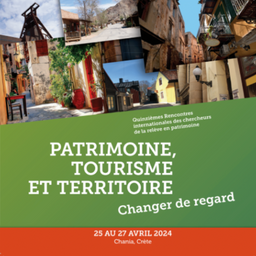Industrial heritage, a working-class memory worth saving?
My Session Status
In July 2021, France carried the project of a “climate and resilience law,” one of whose objectives was Zero Net Artificialization (ZAN), a sort of accounting balance of land use, in which any new construction must be accompanied by a project to renaturalize an equivalent artificialized surface. The Maubeuge–Val de Sambre agglomeration in the north of France is one of the pilot areas for this project, given the large number of brownfield sites in the area, which was once a metallurgical basin and is now abandoned. This law therefore imposes a choice on public decision-makers: to reinvest this industrial heritage, by assigning it a new function, or to destroy it and invest in its place either in the construction of a new building, or in the renaturation of the area, a notion of “creation-destruction.” This raises the question of the value, both economic and social, attributed to this disused industrial park: should we preserve it, as a vestige of a prosperous past for the region and a source of pride for its workers, or should we agree to get rid of it to make way for other projects? And in the case of conservation, what would be its new purpose?
We address these questions through case studies showing the possibilities for reinvestment of obsolete industrial heritage by communities and residents, in this case the Wallers-Aremberg creative mine. This coal mine, an extraction site from 1899 to 1989, was left derelict until 1992, when director Claude Berri scouted the site for his film Germinal (1993), an adaptation of the 1885 novel by Zola, which was itself inspired by the Mathilde pit in Valenciennes. Renovated for the needs of the film, the site was then put out to tender, mainly for film projects, and today serves new purposes: on the one hand, the site still hosts film shoots, as well as seminars and cultural and sporting events, such as the Paris-Roubaix cycle race (and the cobbled Aremberg Gap). On the other, it is a teaching and research site, with premises occupied by the DeVisu laboratory of the Université polytechnique des Hauts-de-France. Finally, it is also a place invested with the memory of an industry, kept alive by former miners, who volunteer to show visitors around their workplace (an integral part of their identity according to Marx). Beyond production, the mining industry has shaped the area in every aspect of life. An industry will therefore produce a tangible heritage (mines/coronas/miners’ service buildings/churches) as well as an intangible heritage (festivals/traditions/fictions/songs), and all this will create a territorial identity, surviving the death of the industry to enter the collective imagination of residents (and non-residents), to the point of joining the UNESCO World Heritage List in 2012.
